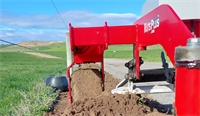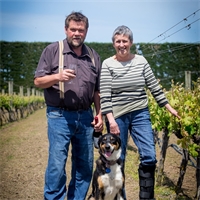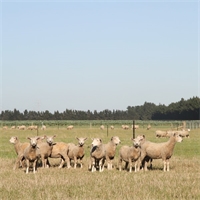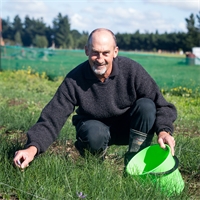29May
Aphids no match for winter cereal treatment
Words and image supplied by NuFarm
The cereal aphid (Rhopalosiphum padi) may be tiny in size, but as the main vector for one of the most costly diseases in New Zealand cereal crops, its potential impact is anything but small. Barley Yellow Dwarf Virus (BYDV) can be devastating for yields in a bad season, with losses of up to 40% recorded.
Seed treatment protects young wheat and barley seedlings in early stages of establishment but once this wears off the plants are at risk of attack.
Typically, infections occur when infected adult aphids fly into newly emerging crops in the autumn. If not controlled, these then reproduce to create populations of aphids which are responsible for secondary spread of BYDV within the crop and further movement into other fields. The warmer the temperature, the quicker the aphids reproduce, build up and spread. Cereals are most susceptible to BYDV infection from emergence until the start of stem elongation. Because very low numbers of aphids can cause widespread BYDV infection, it is essential to control aphid numbers before they become a problem, Nufarm advises.
Kaiso® 50WG from Nufarm is a synthetic pyrethroid insecticide that contains 50 g per kg of the active ingredient lambda-cyhalothrin, but its key point of difference is its formulation. Developed and patented by Nufarm, the Sorbie Technology found in Kaiso 50WG combines the benefits of emulsifiable concentrate (EC) and water dispersable granule (WG) formulations.
It looks like a water dispersable granule, but once added to water, behaves like an emulsifiable concentrate, meaning easy measuring and mixing, with no dust to worry about and no rinsing of measuring jugs or containers required.
This is different to other products available in the market with the same active, which are either EC or SC formulations.
Farmers and contractors appreciate Kaiso 50WG’s unique combination of ease of use and efficacy, Nufarm says“It has all the user friendly handling and mixing attributes of a WG, including stability, volumetric measuring and enhanced operator safety e.g. no splash, non flammable and easy clean up if spilt, but it functions with the same efficacy parameters as an EC formulation when it is mixed with water.”
Kaiso should be applied at the first sign of aphids. Use the lower rate when aphid pressure is low, and shorter residual activity is required. A second application may be needed if aphids continue to migrate into the crop. Ensure sufficient water volume is used to give thorough crop penetration and coverage. Kaiso 50WG is a Group 3A insecticide, and qualifies for Agrecovery. For more advice on using Kaiso 50WG to protect cereal crops from the effects of BYDV this season, contract your Ruralco representative today.
® Kaiso is a registered trademark of Nufarm Limited.
Related

Filling in pivot ruts and retrieving material from under dairy lane fences has never been easier wit...
Read More

In an industry dominated by large companies and big brands, Canterbury-based Straight 8 Estate winer...
Read More

It’s been 30 years since Barenbrug Agriseeds became the first private company in the southern hemis...
Read More

As I write this update, Canterbury’s Port Hills are burning. With evacuations, monsoon buckets, hel...
Read More

A lifestyle change signaled a return to farming roots for Canterbury Saffron growers Geoff and Jude ...
Read More

The Todhunter family have doubled down on many generations of established success on Cleardale Stati...
Read More